Panathenaic Stadium is a must see tourist destination in Athens and a unique architectural destination since it’s the only stadium in the world built entirely out of marble. But what makes this place stand out from everything that we saw in Greece is that this place is where the first modern Olympics Games were hosted back in 1896.
We were in Athens in the summer of 2021, waiting a few days before taking our cameras to the Aegean sea while onboard Running on Waves. When we started planning our time in Athens, we knew we would have to visit a place related to Olympic history. We learned about a stadium where the Olympic torch leaves every four years, in a long journey to a new host city. But we didn’t know its name.
This is how we found out about the gorgeous Panathenaic Stadium in Athens. Here you’re going to see some of the many pictures we took there, including some from our drone, as well and a bit of the history of this special place in Greece.
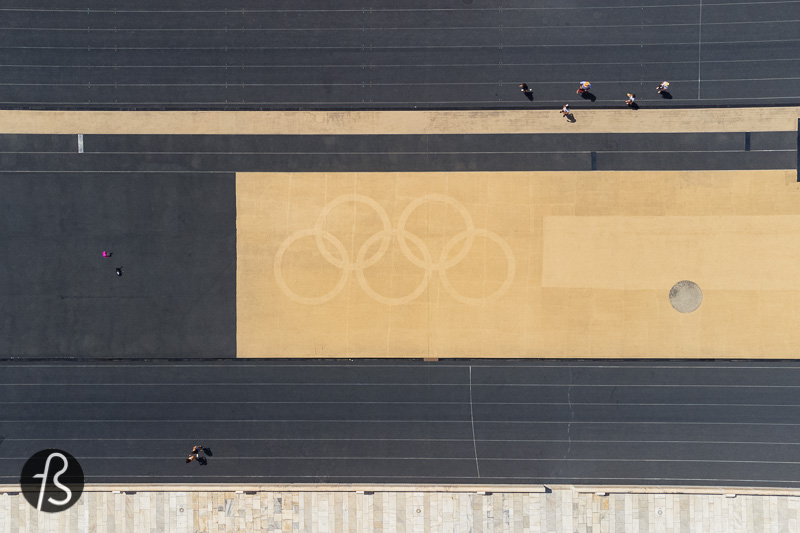
Understanding the Panathenaic Stadium through the Ages
Outside Athens, the Panathenaic Stadium started as a racecourse between two hills and Agra and Ardettos. Next to it, the Ilissos river used to flow, and we can only imagine how idyllic this place used to be in ancient times. Nowadays, the river flows under the Vasileos Konstantinou Avenue, and the atmosphere around the stadium feels quite busy. But, it’s still a fantastic place to visit in Athens!
The name of the stadium comes from the Panathenaic Games. A mixture of cultural events, religious festivals and athletic competitions that were part of a much larger religious occasion; the Great Panathenaia. This festival was a way for the people of Athens to celebrate the city’s patron, and it happened every 4 years in honour of the goddess Athena.

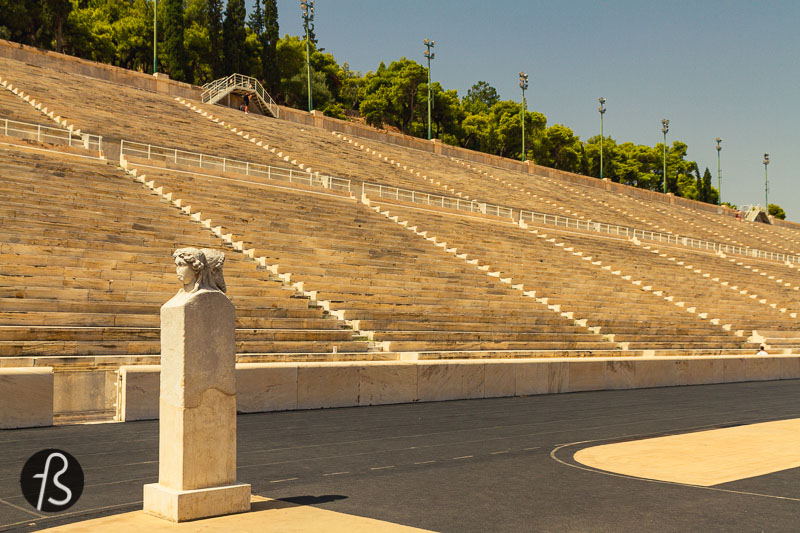
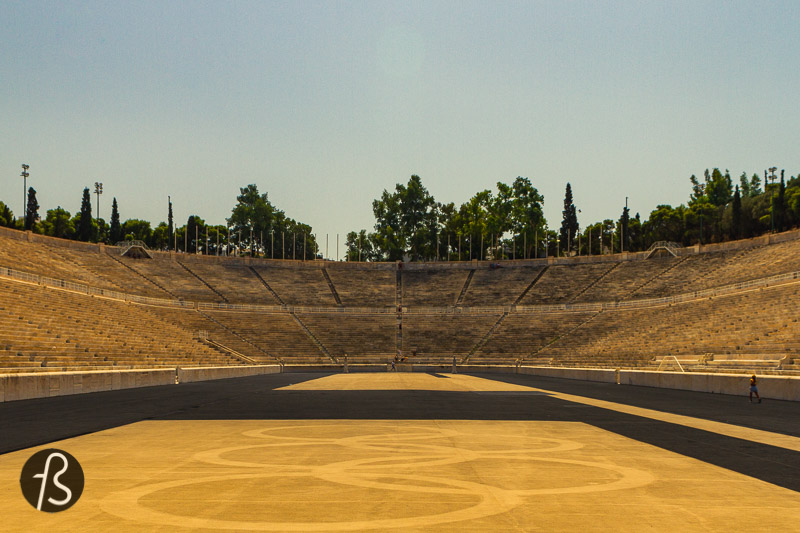
Ancient Greece
In 338 BC, Lykourgos took over the city’s finances. They decided to build a venue that would be appropriate for the games. The area owner was Denies, and he was convinced by Lykourgos to donate the land to the city, and the works started after that.
The Stadium of Lykourgos was completed for the Panathenaic Games of 330 BC, or so we believe.

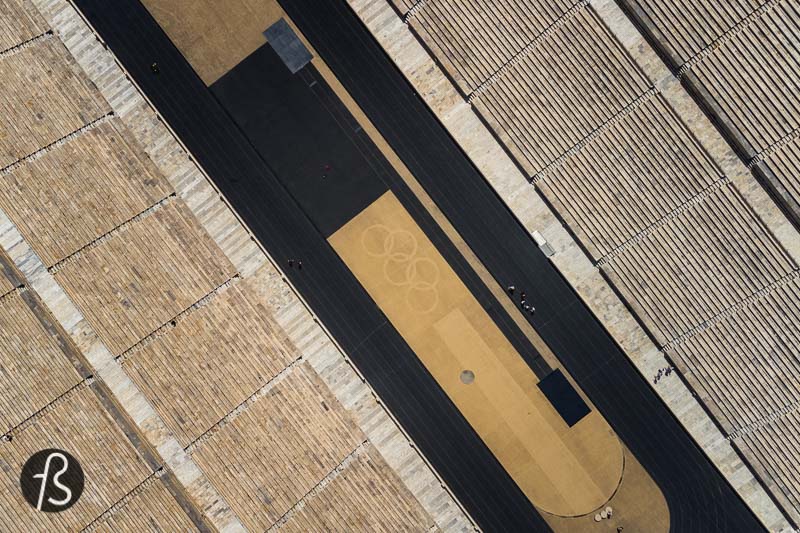
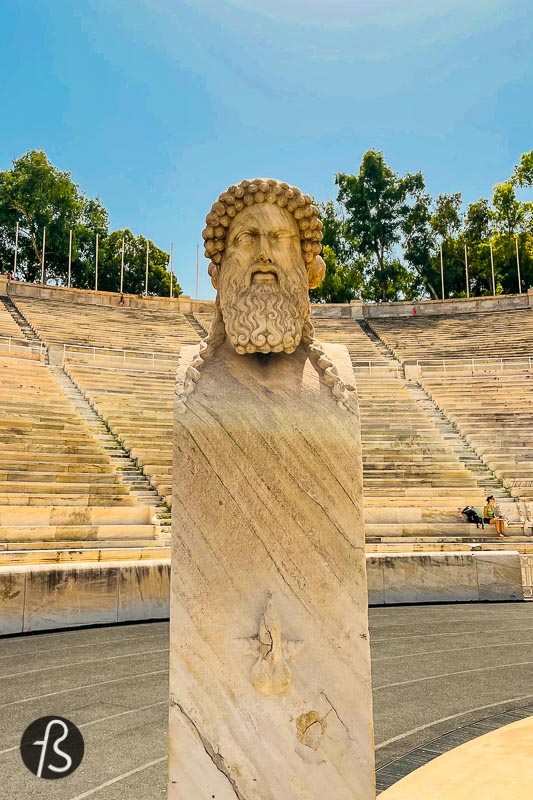
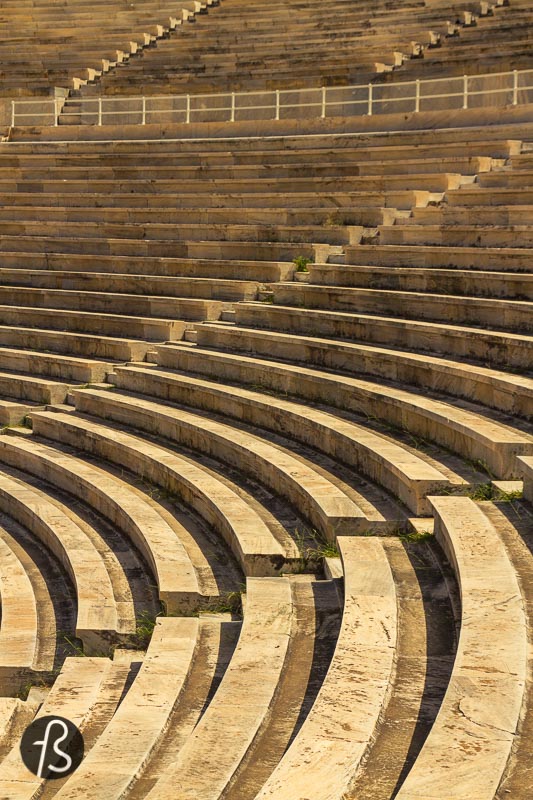
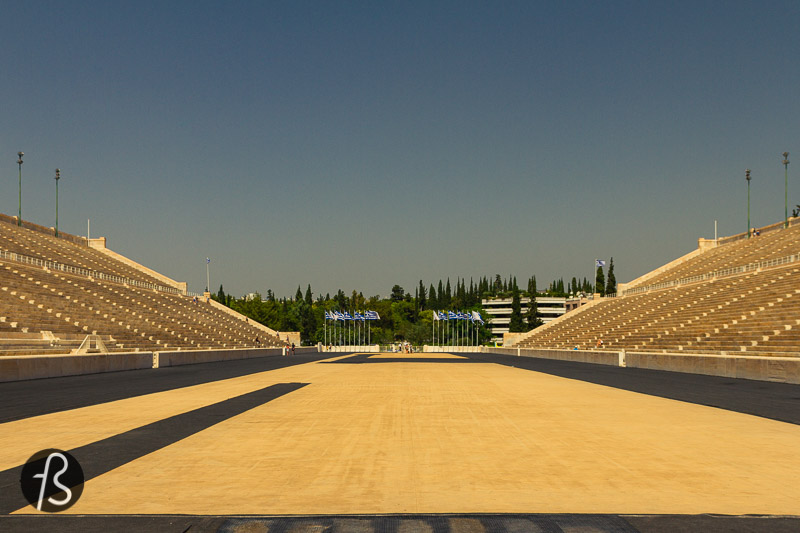

The stadium in Roman times
During Roman times, the city of Athens lost its political power. Still, it became a centre for intellectual and artistic endeavours. During the reign of Emperor Hadrian, Herodes Atticus spent a large sum of his fortune in buildings and sanctuaries across different cities in the Roman Empire. One of these projects was the reconstruction of the Panathenaic Stadium around the year 138.
The new Panathenaic Stadium was built entirely out of marble from Mount Pentelicus. The stadium’s shape changed from an originally rectangular shape that was common into a horseshoe design. Now the stadium could host up to fifty thousand people, and there was nothing like it at the time.
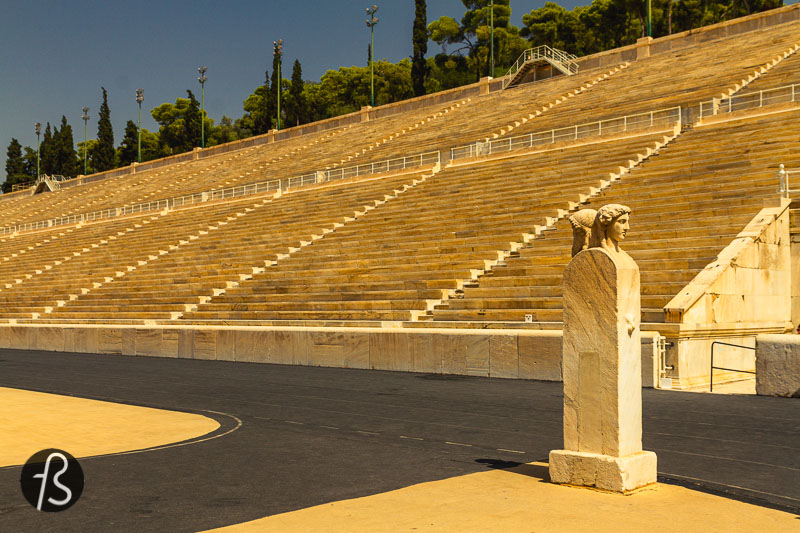
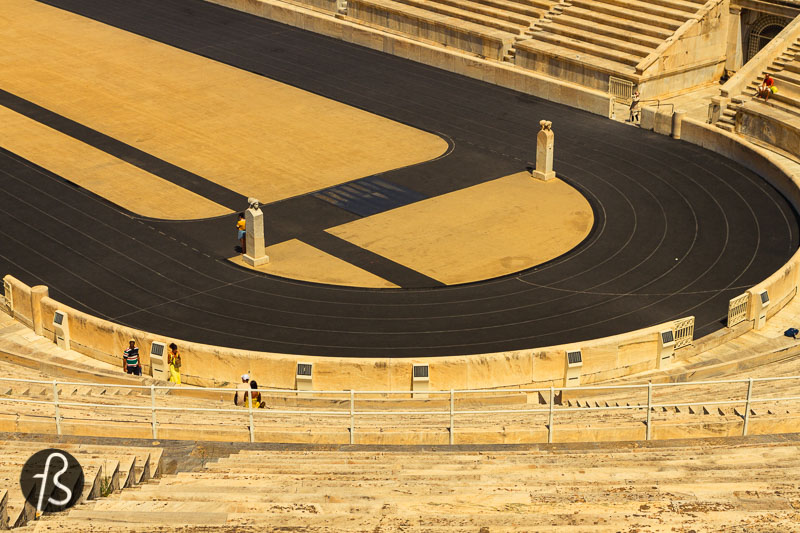
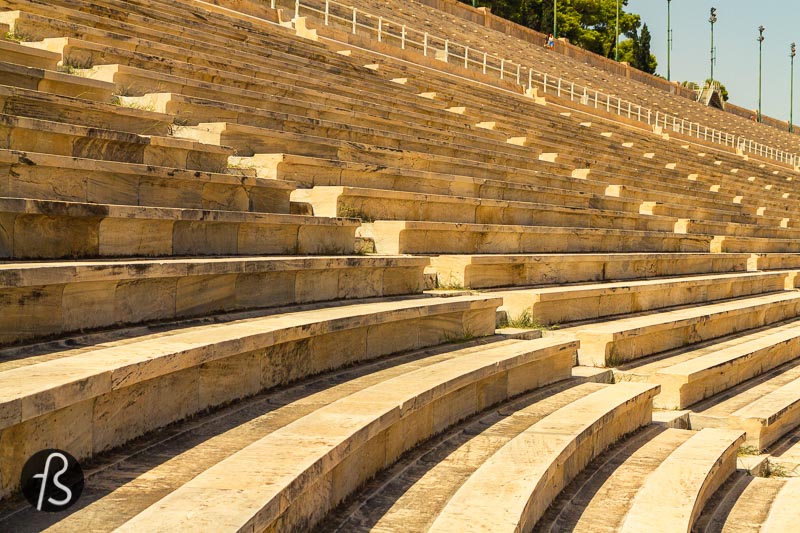

An abandoned stadium
When Roman Emperor Theodosius I banned the Hellenistic festivals and spectacles in the late 4th century, the stadium lost its glory. Christianity banned pagan celebrations and festivals that were considered barbaric. There wasn’t a place for the Panathenaic Stadium in those days.
As time passed, the stadium was abandoned and fell into ruin. Its marble was used in Athenian buildings and the towns around it.
During the era of the Duchy of Athens, a state set up in Greece during the Fourth Crusade, feats of arms were held in the ruins of the stadium. We can only imagine how this would look like.
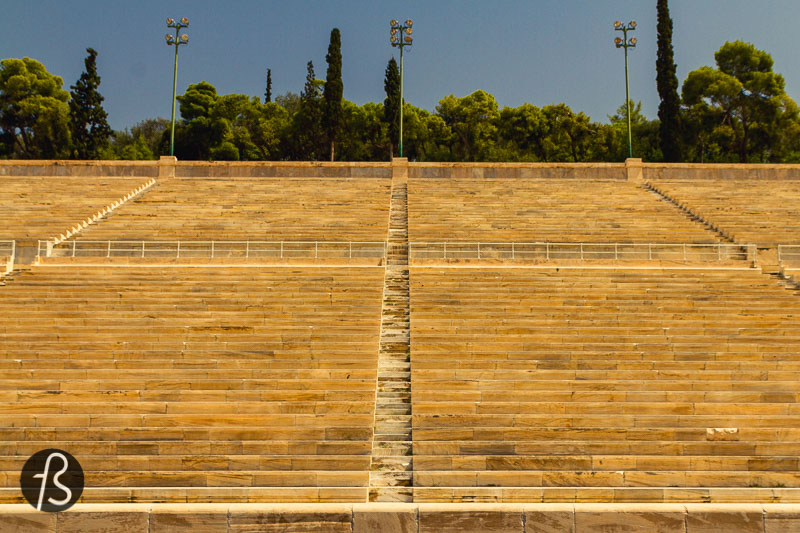
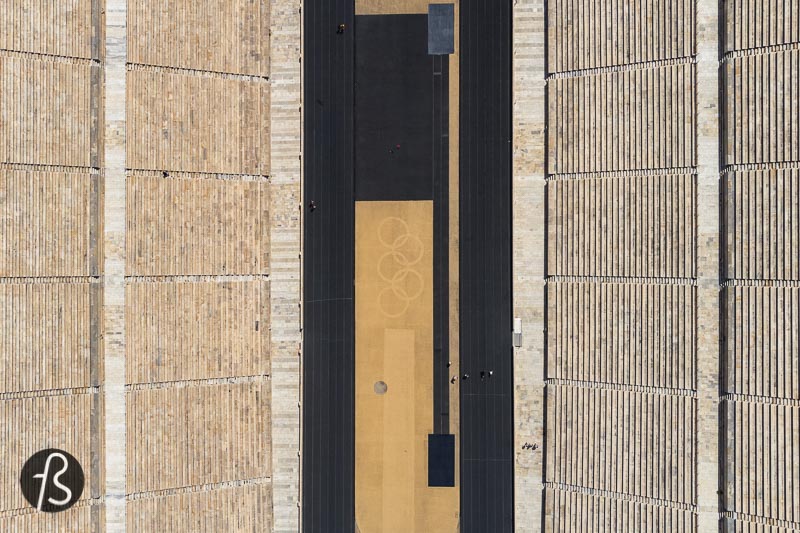
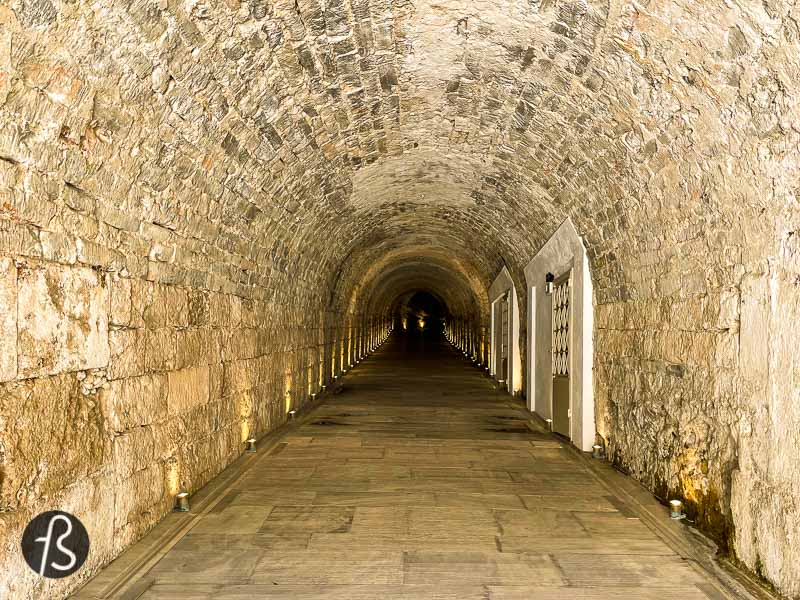
After the Greek Independence
With the independence of Greece, archaeological excavations started uncovering traces of the stadium. The first excavations began around 1836 and were followed by German-born architect Ernst Ziller in 1869–70. Pieces of marble were unearthed, and our Hermai, a sculpture with a head above a plain lower section, was found.
Before the modern Olympic Games, another game was held at the stadium. The Zappas Olympics were a series of athletic events that were part of a revival movement sponsored by Greek businessman Evangelis Zappas, present in the Panathenaic Stadium today with a statue.
This archaeological work helped create plans for the reconstruction of the Panathenaic Stadium. In the mid-1890s, preparation work was done by the architect Anastasis Metaxas, and the design was focused on recreating the ancient stadium with the highest degree of fidelity.
All of this work was sponsored by George Averoff, a wealthy businessman. Under the request of Crown Prince Constantine I of Greece, he donated almost one million drachmas for the construction works.
If you are looking for a yacht-style experience in a small ship with excellent food and service, we think we have the thing for you. Go check our article about the Aegean Cruise on Running on Waves.
When you book your cruise, use the code fotostrassecruiseonwaves for a 5% discount on top of their regular advanced booking discount.
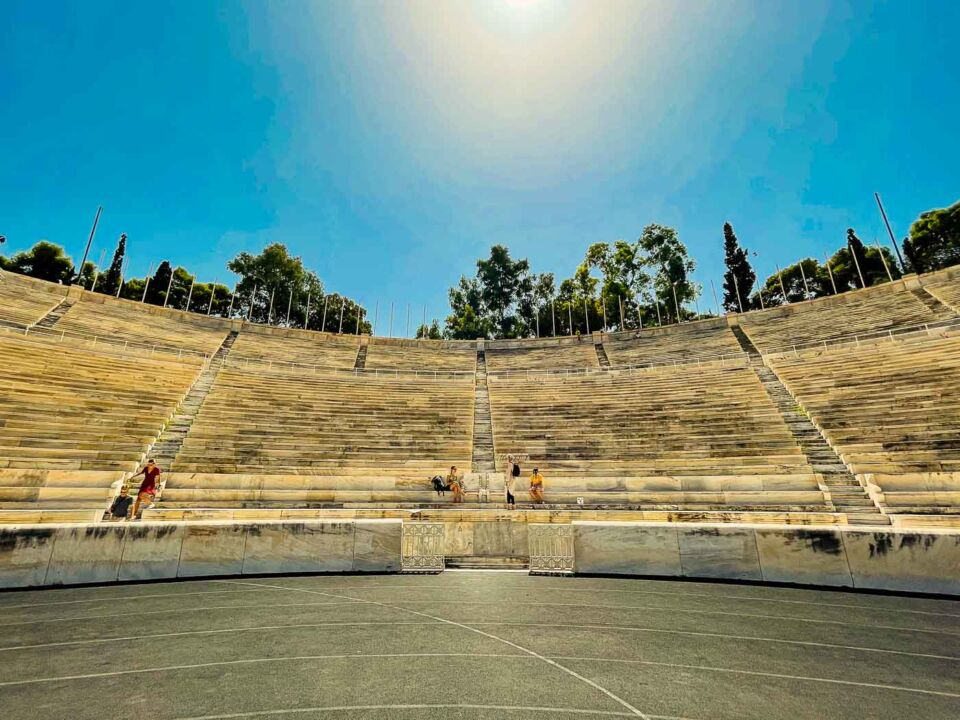
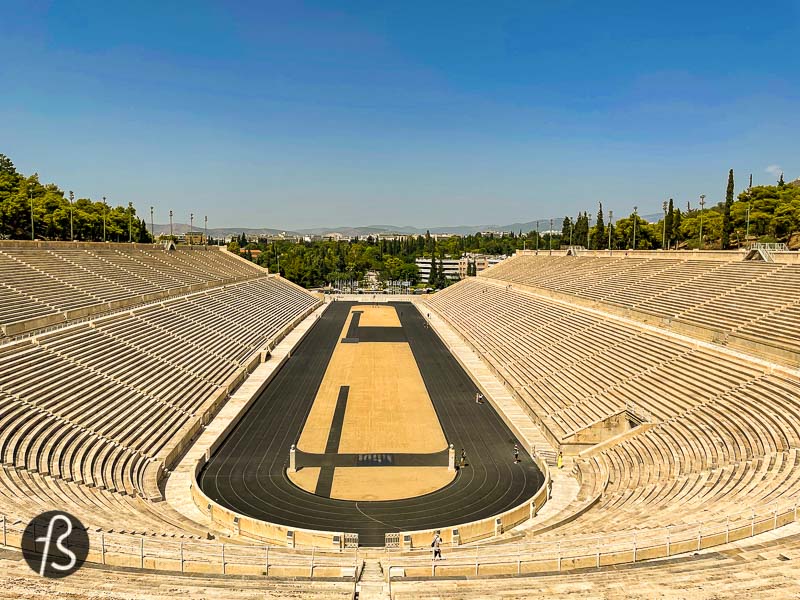
The Panathenaic Stadium and the Modern Olympic Games
The Panathenaic Stadium was used for the opening and closing ceremonies of the 1896 Olympics. The games started on an important day for Greece since it was the anniversary of the country independence. The stadium was packed; some say that eighty thousand spectators were there.
During the opening ceremony, athletes were aligned in the middle of the stadium, grouped by country. After a speech from Crown Prince Constantine I of Greece, the president of the 1896 organizing committee, the games were opened.
The Panathenaic Stadium was also used for wrestling, weightlifting, gymnastics and athletic competitions during the 1896 Olympics.
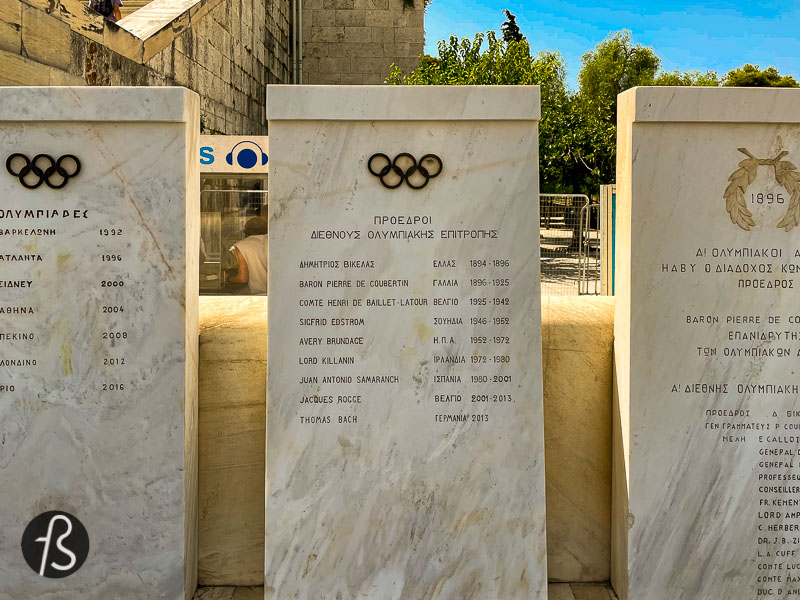
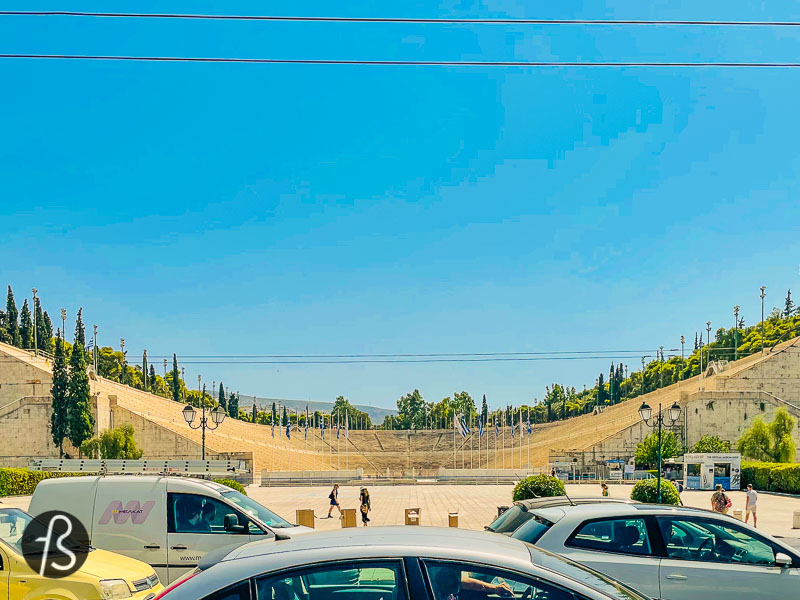
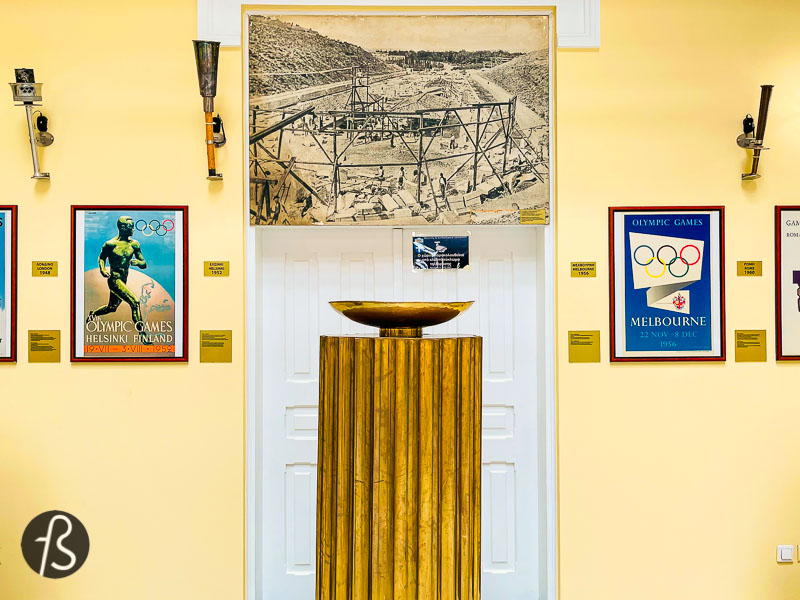
The Panathenaic Stadium today
Today, the Panathenaic Stadium is still used for ceremonial, cultural and sporting events. Every four years, during an Olympic Games year, the Olympic Flame leaves the ancient site of Olympia. It travels around Greece before arriving at the stadium where the official hand-over ceremony occurs.
In the 2004 Olympics, the stadium was again used when it held the archery competition. It was also the finishing line for the Marathon for both men and women.
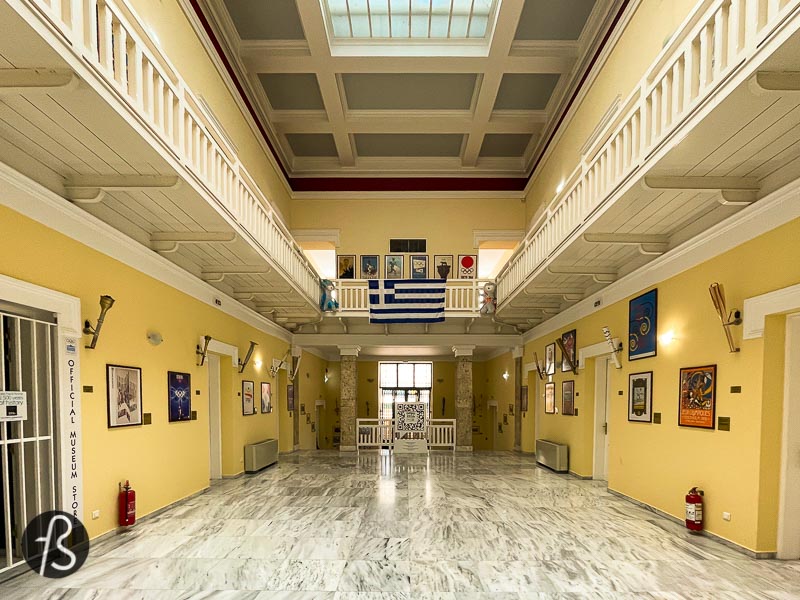

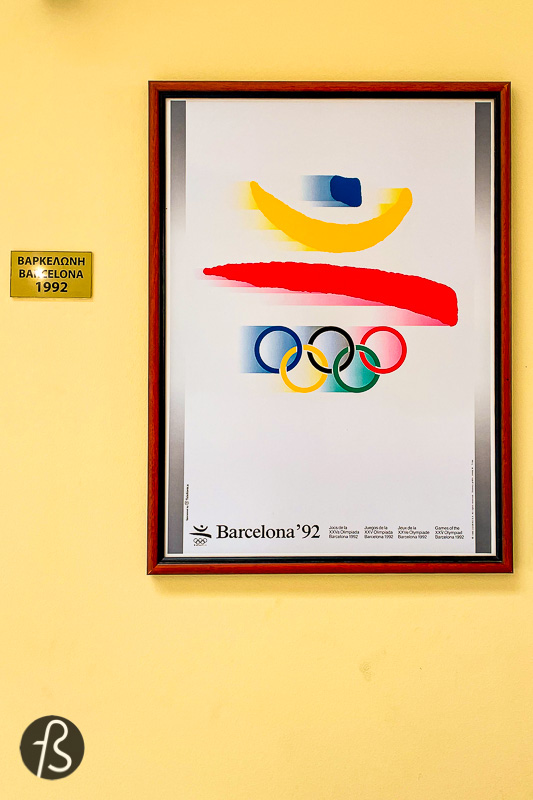
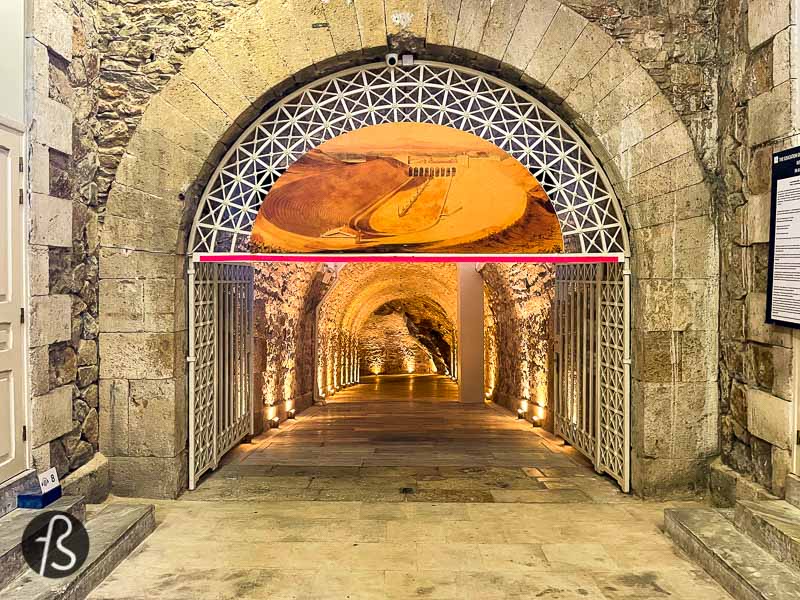
Visiting the Panathenaic Stadium
When in Athens, a visit to the Panathenaic Stadium is essential. This piece of sports history is unforgettable, and you need to spend some time walking along with the marble benches of this place.
There you will be able to see not the stadium but a complex of monuments that includes a Temple of Fortuna, the tomb of Herodes Atticus and a vaulted passage under the benches that lead to an exhibition called Memories from Olympic Games. You will be able to see posters and Olympic torches from 1896 till today, and it’s pretty interesting to see how they evolved in time.
As of 2022, tickets for the stadium go for €10 and can be acquired at the ticket offices. There are audio tours available as well. You should use the map below to find your way there.
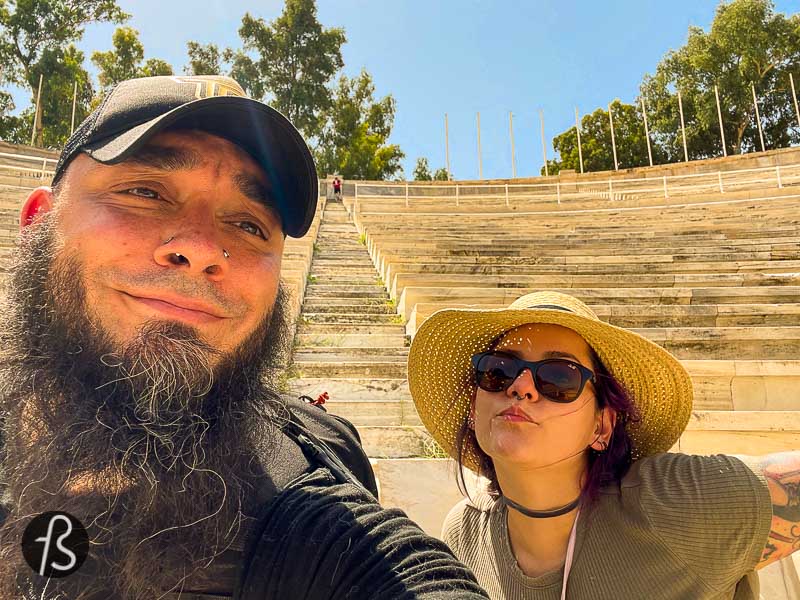
The Panathenaic Stadium in Athens: A Visit to the Marble Stadium that hosted the first modern Olympics
Leif. Vasileos Konstantinou, Athina 116 35, Greece